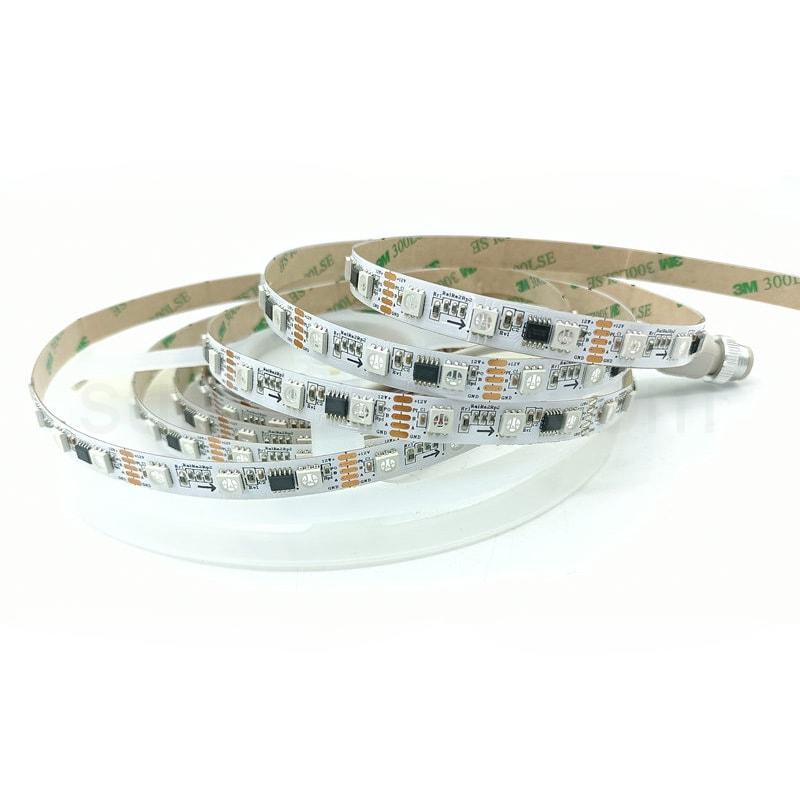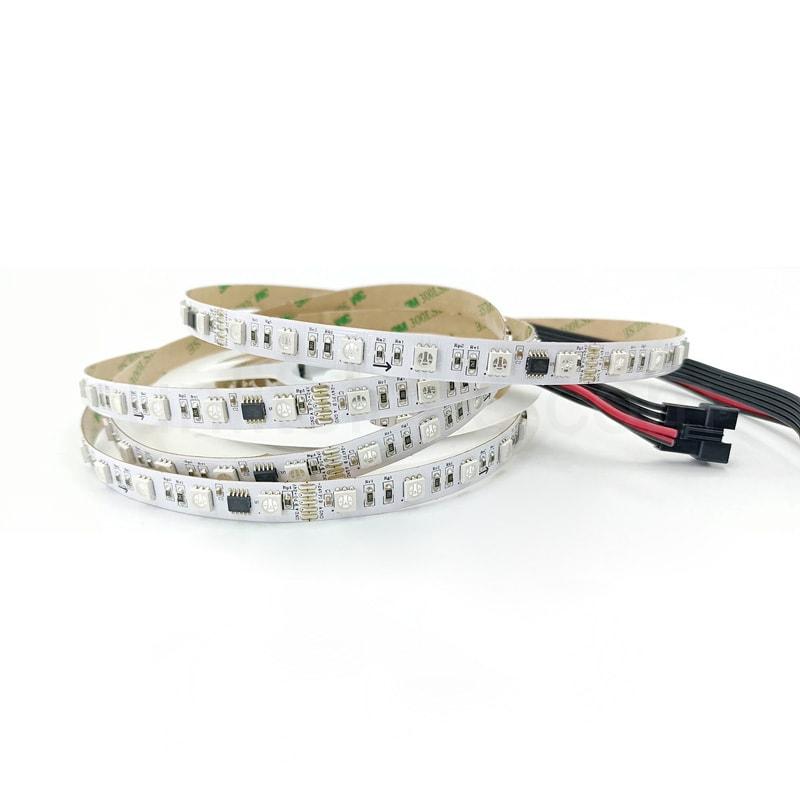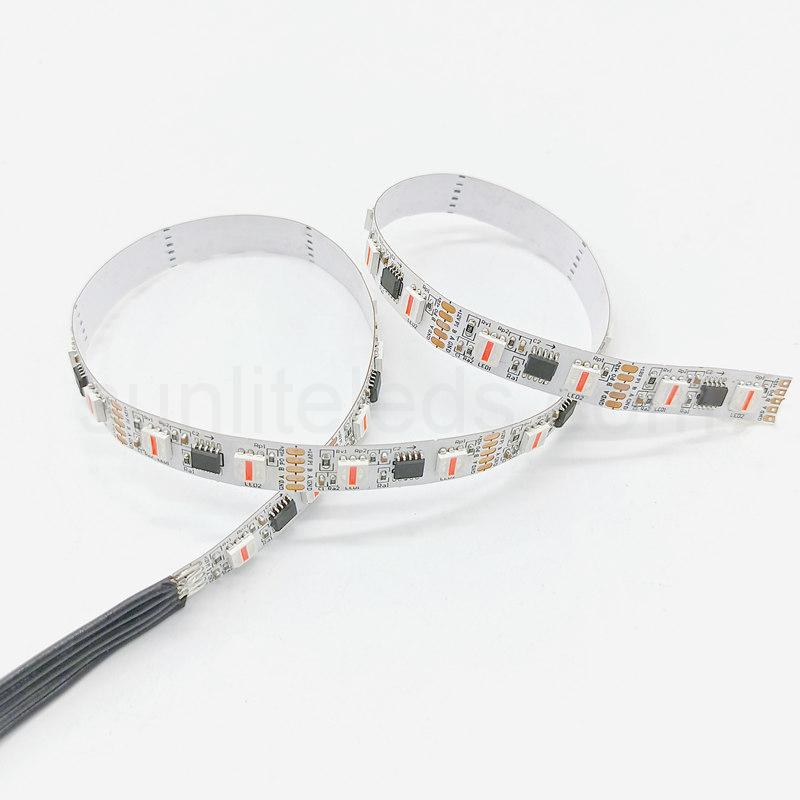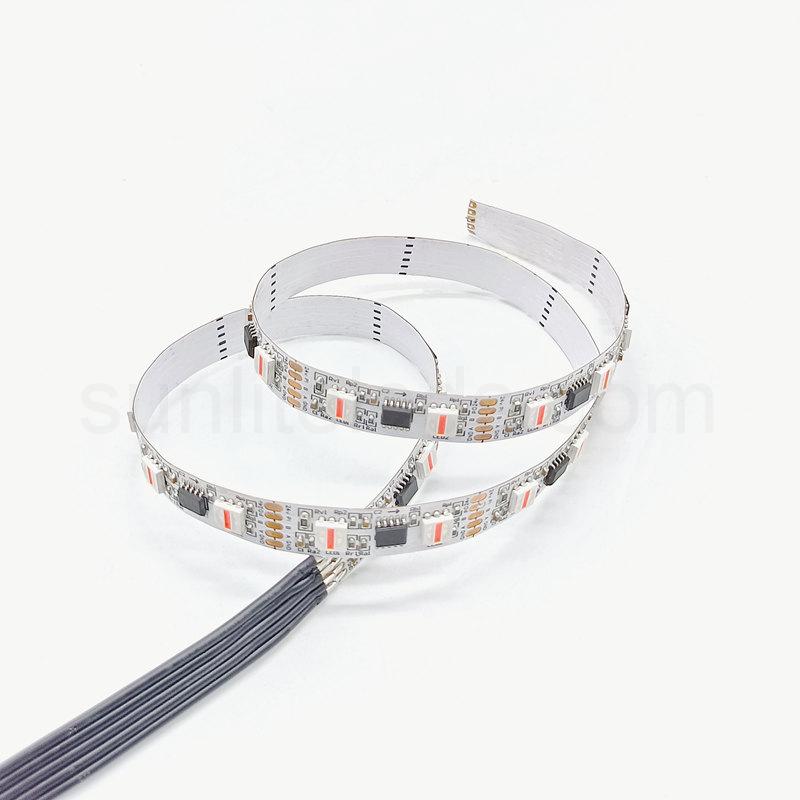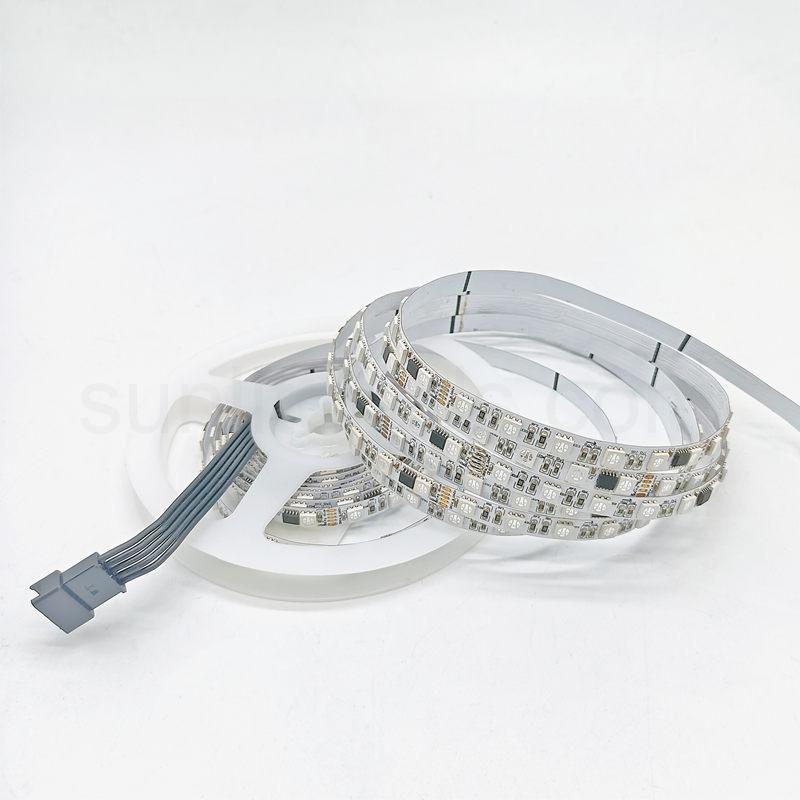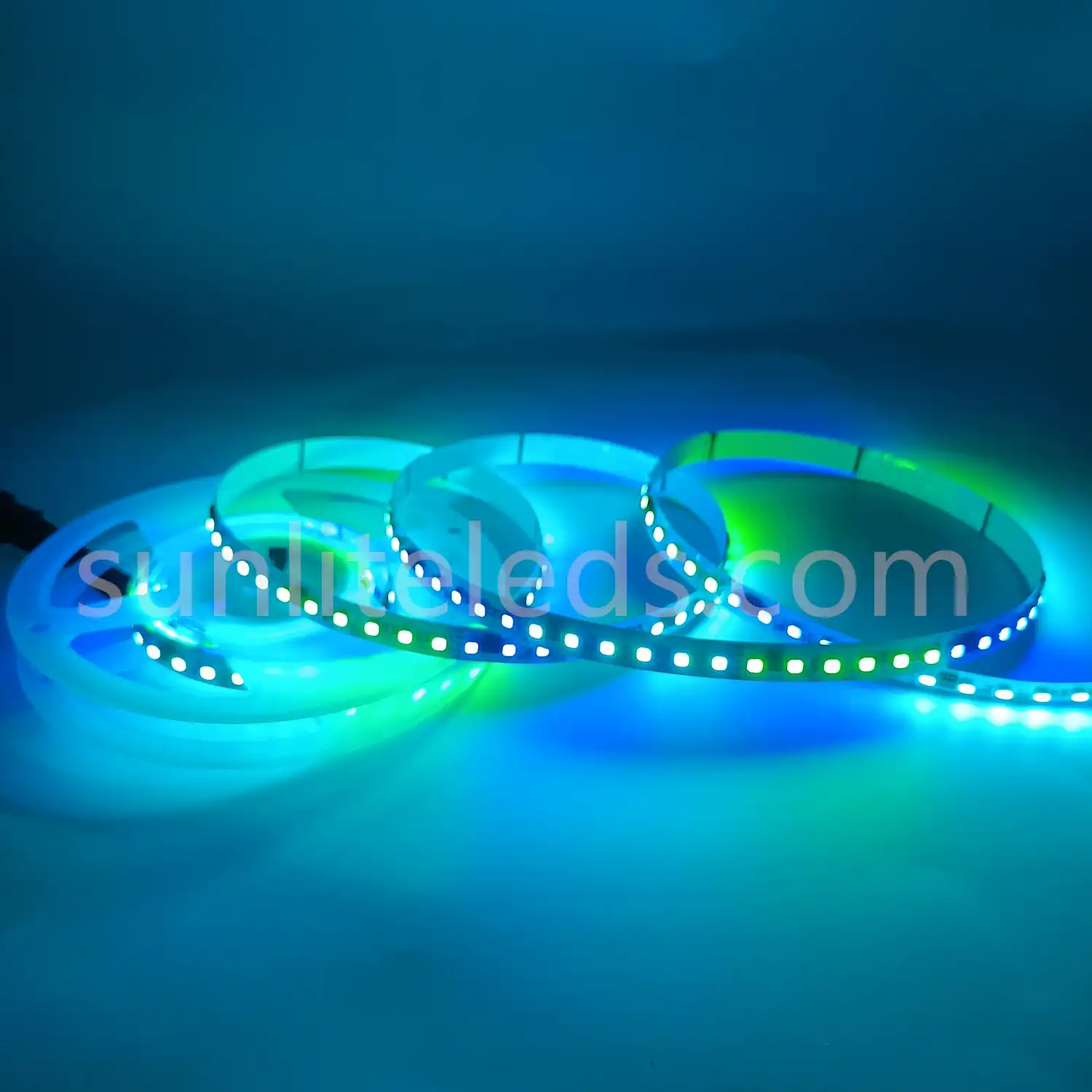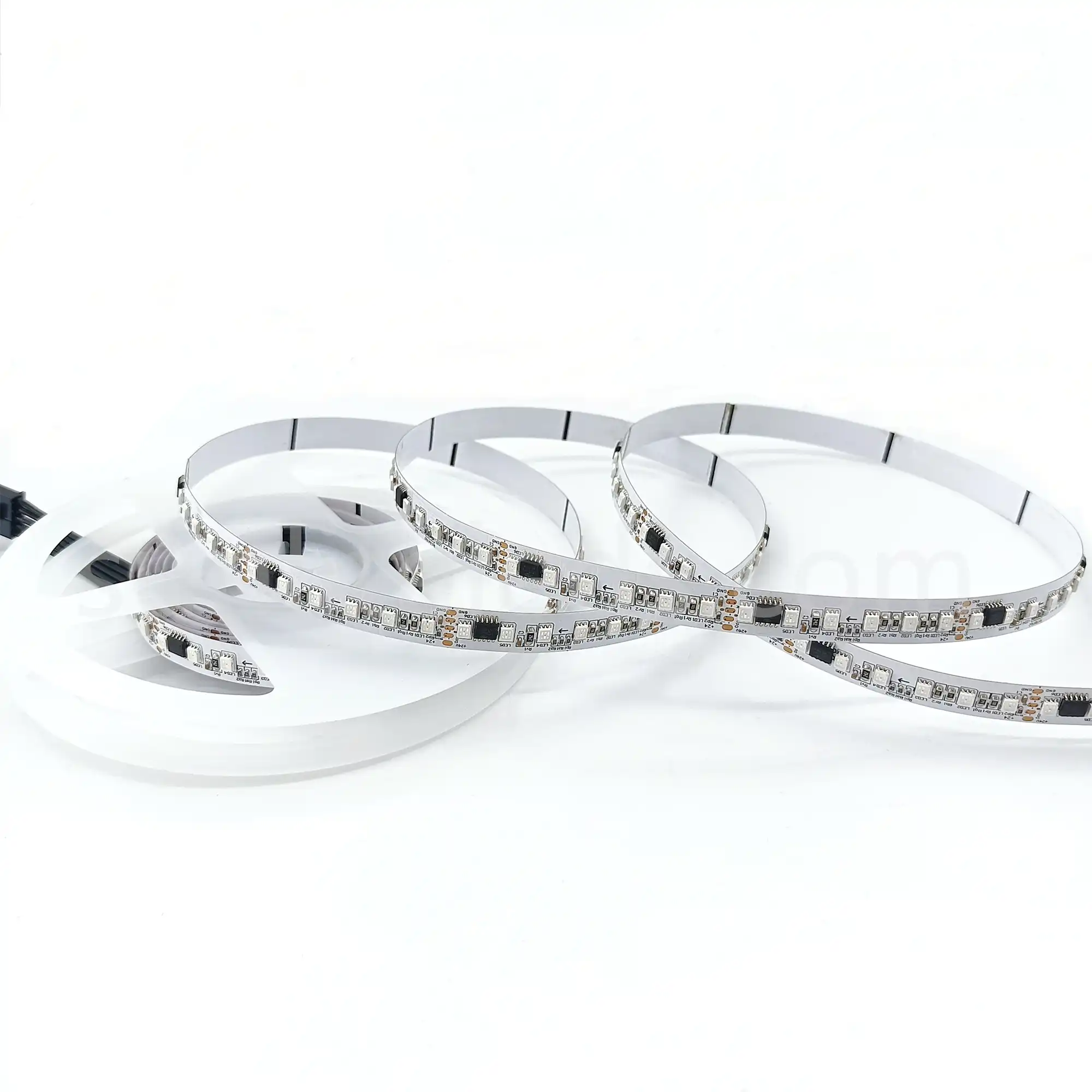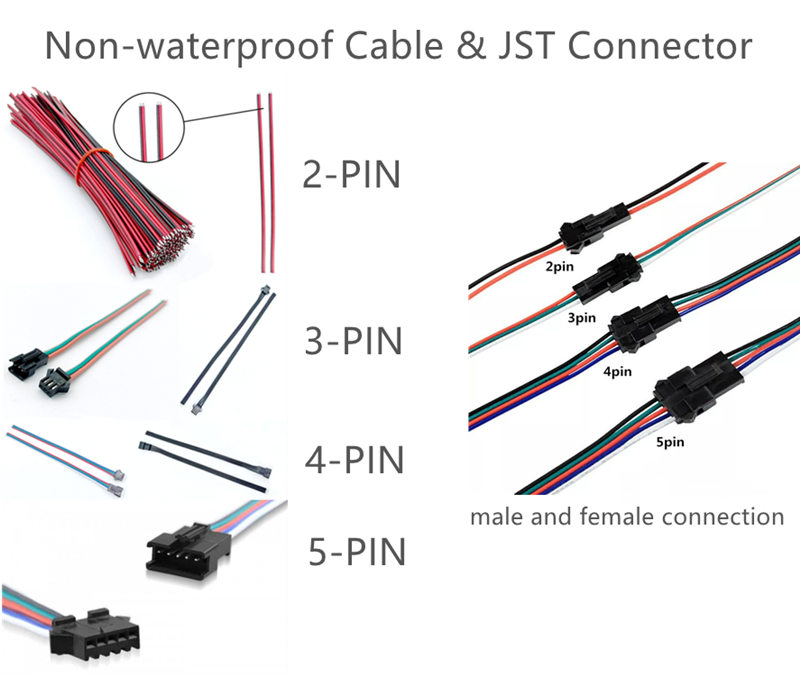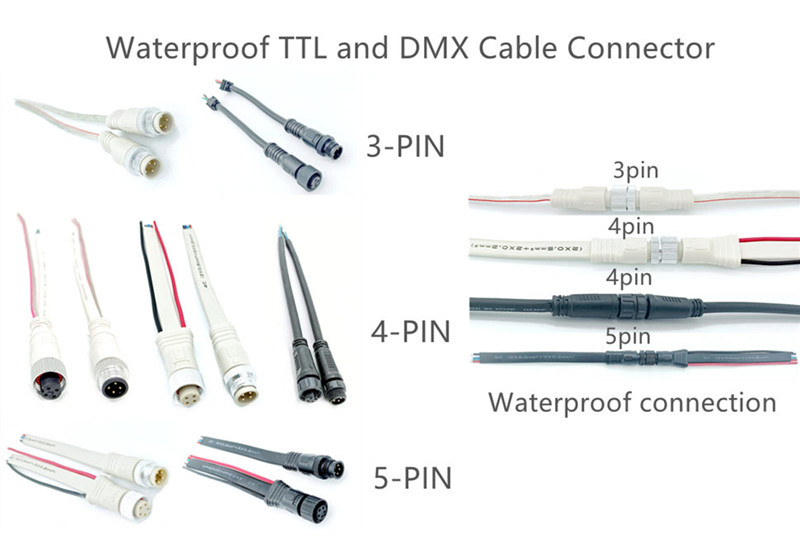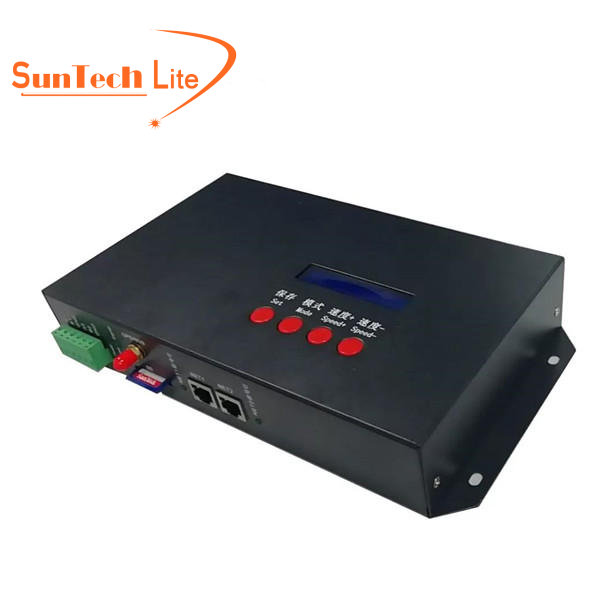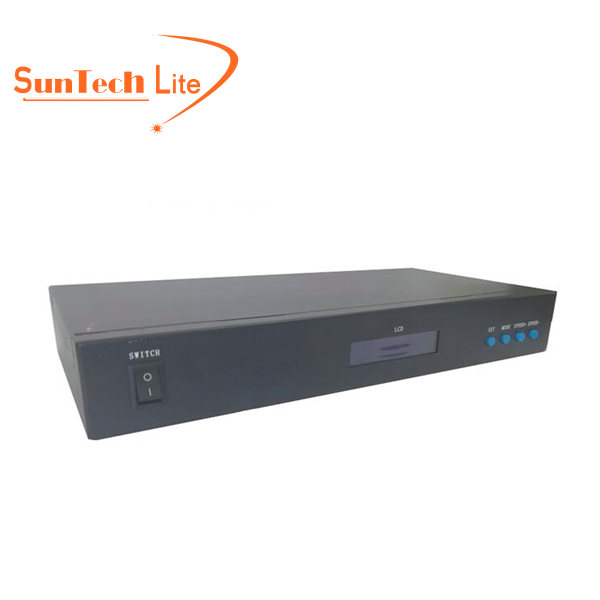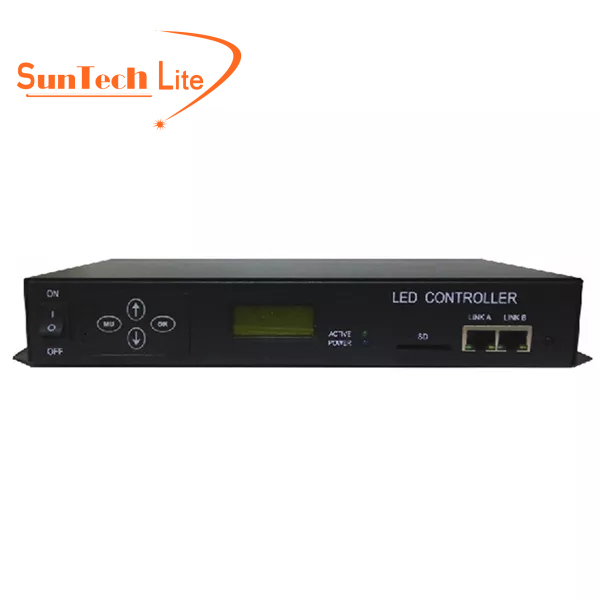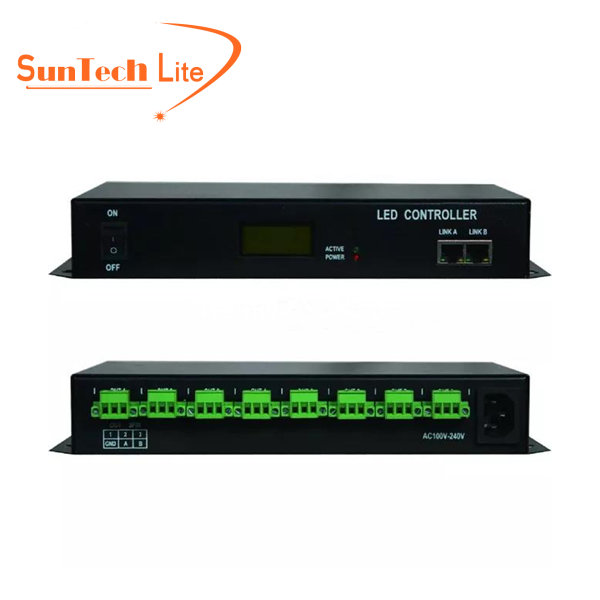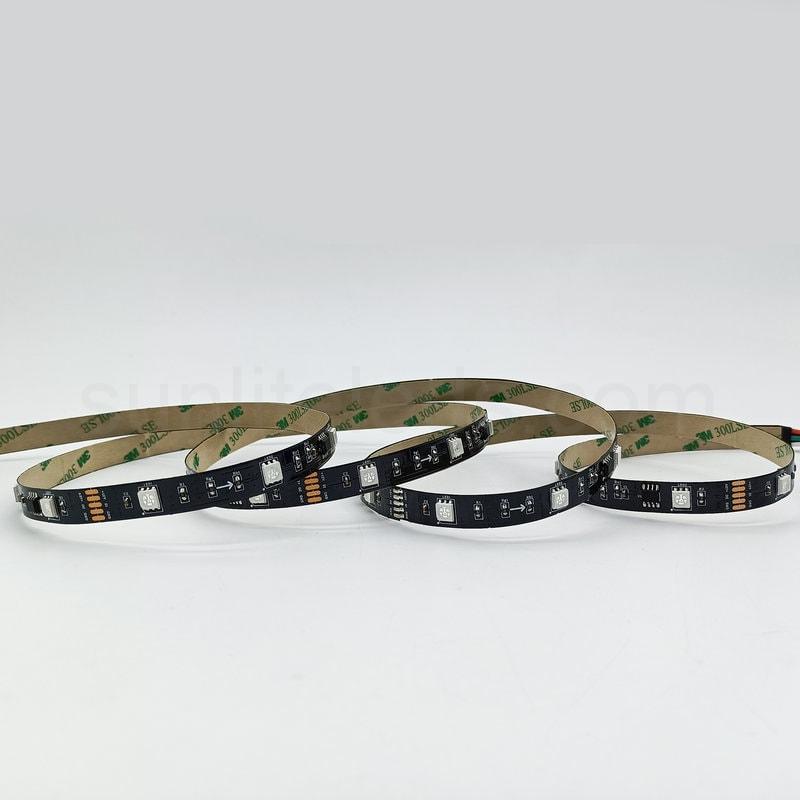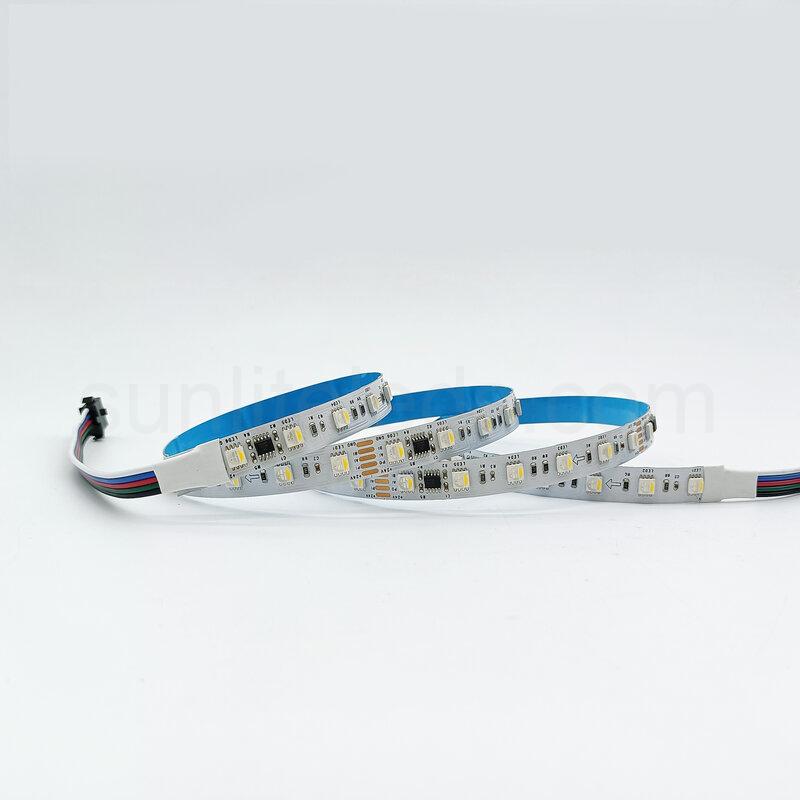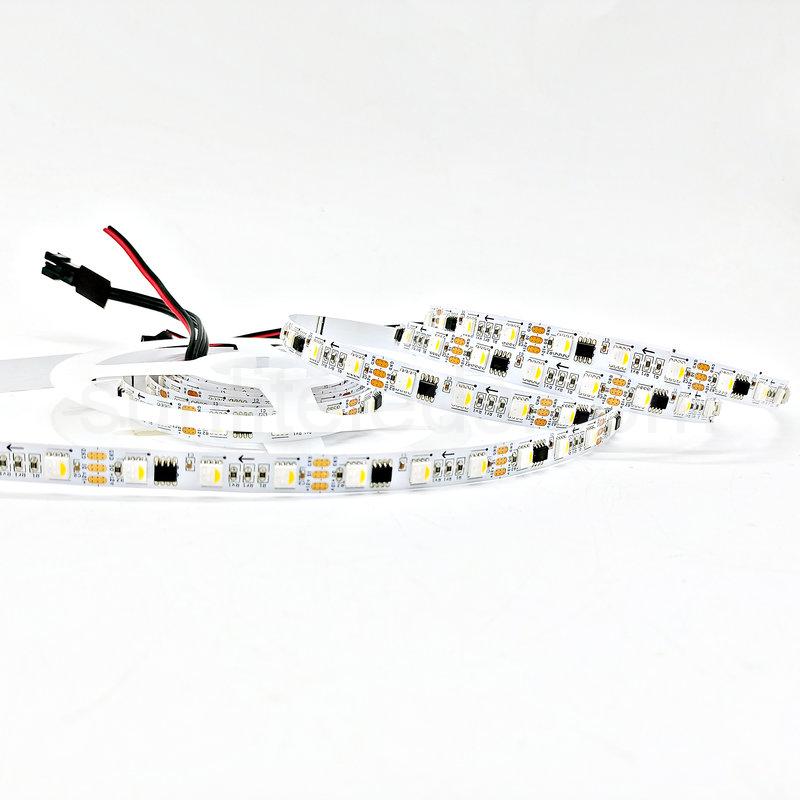RGB DMX LED Tape Light has five wires (V+, GND, A, B, P), where D, A, B are the data line and P is the address line, and it can control single white light, color temperature white lights, color tuning RGB/RGBW/RGBCCT lights.
We supply RGB DMX LED strip including :
DC12v 60leds/m 20pixels/m RGB DMX LED strip
DC12v 60leds/m 20pixels/m RGBW DMX LED strip
DC12v 60leds/m 30pixels/m RGB DMX LED strip
DC24v 60leds/m 10pixels/m RGB DMX LED strip
DC24v 72leds/m 12pixels/m RGB DMX LED strip
DC24v 120leds/m 20pixels/m RGB DMX LED strip
DC24v 60leds/m 30pixels/m RGB DMX LED strip
Product Parameters
| Item | Voltage | Power | Pixel Quantity | LED Quantity | Cutting Unit | Break Continue | PCB Width |
|---|---|---|---|---|---|---|---|
| ST-DMX-5PIN-RGB-60-12V | DC12V | 14.4W/M | 20 pixels/m | 60LEDs/m | 50mm | Yes | 10mm |
| ST-DMX-5PIN-RGB-60-24V | DC24V | 14.4W/M | 10 pixels/m | 60LEDs/m | 100mm | Yes | 10mm |
Item: ST-DMX-5PIN-RGB-60-12
LED Qty: 60
Voltage: DC12V
Cutting Unit: 50 mm
Power: 14.4 W/m
Pixel Qty: 20 Pixels
Break Continue: Yes
PCB Width: 10mm
5meters 60LEDs/m DMX512 RGB led strip lights for sale, with 12V+ GND A B P 5CH wires. The 12V DMX led strip supports the operation mode of the first installation and then writing code, and any animation effects can be realized through the artnet dmx controller programming.
Item: ST-DMX-5PIN-RGB-60-24
LED Qty: 60
Voltage: DC24V
Cutting Unit: 100 mm
Power: 14.4 W/m
Pixel Qty: 10 Pixels
Break Continue: Yes
PCB Width: 10mm
Low voltage DC24V which can make sure longer running distance to 10 meters same rightness, also energy-saving and environmentally friendly. Adopts high-quality material, make high bright 5050 RGB LED chips, based on flexible FPC substrate, with the advantage of good conductivity, faster heat dissipation, bending resistance, easy to get the shape you need.
Item: ST-DMX-5PIN-RGB-60-12V
LED Qty: 60
Voltage: DC12V
Cutting Unit: 33.3 mm
Power: 14.4 W/m
Pixel Qty: 30 Pixels
Break Continue: Yes
PCB Width: 10mm
A dual data signal 5 pin dmx controlled RGB rope light with 60 LEDs per meter, DC 12 volts power input. Each 2-LED segment of this dmx RGB led tape is controlled by a 10-pin UCS512 DMX512 IC chip, so 2 LEDs are a pixel, there are 30 pixels per meter, 150 pixels per reel.
Item: ST-DMX-5PIN-RGB-60-24V
LED Qty: 60
Voltage: DC24V
Cutting Unit: 33.3 mm
Power: 14.4 W/m
Pixel Qty: 30 Pixels
Break Continue: Yes
PCB Width: 10mm
This High Bright DMX RGB LED Strip for your building lighting decorations, with a special 24v LED strip but with each 2 leds cuttable instead of 6 leds cuttable. LEDs design, high brightness. It adopts RGB (red, green, blue, and white) 3 in 1 SMD5050 lamp beads, which can realize colored light effects. The DMX LED strip can be precisely adjusted and controlled by the DMX512 control system.
Item: ST-DMX-5PIN-RGB-72-24
LED Qty: 72
Voltage: DC24V
Cutting Unit: 83.3 mm
Power: 17.3 W/m
Pixel Qty: 12 Pixels
Break Continue: Yes
PCB Width: 8mm
5 meters DC24V 72LEDs/m dmx controlled led tape light for sale, 8mm PCB wide, each 6 RGB lights can be cut at each 83mm. 1 pixel =6 LEDs, 60 pixels a roll 5 meters. DMX led strip lights allow you to program the lighting affects you want via the artnet controller. And it requires a 24V led power supply to drive this LED strip lighting.
Item: ST-DMX-5PIN-RGB-120-24
LED Qty: 120
Voltage: DC24V
Cutting Unit: 50 mm
Power: 28 W/m
Pixel Qty: 20 Pixels
Break Continue: Yes
PCB Width: 10mm
Powered by DC24V, this LED strip is highly efficient and reliable, ensuring stable and consistent performance over time. Its compatibility with DMX technology allows for precise control over the intensity and color of the LED strip, as well as the lighting effects.
Item: ST-DMX-5PIN-RGB-120-24
LED Qty: 120
Voltage: DC24V
Cutting Unit: 100 mm
Power: 28 W/m
Pixel Qty: 20 Pixels
Break Continue: Yes
PCB Width: 10mm
A higher density 120LEDs/m 2835 RGB DMX 512 led strip. It adapts 3in1 5050 RGB multi-color LED as light source, having more color possibilities. The design of 120 LEDs per meter makes this dmx tape light with more even illumination.
DMX RGB LED Strip Lighting
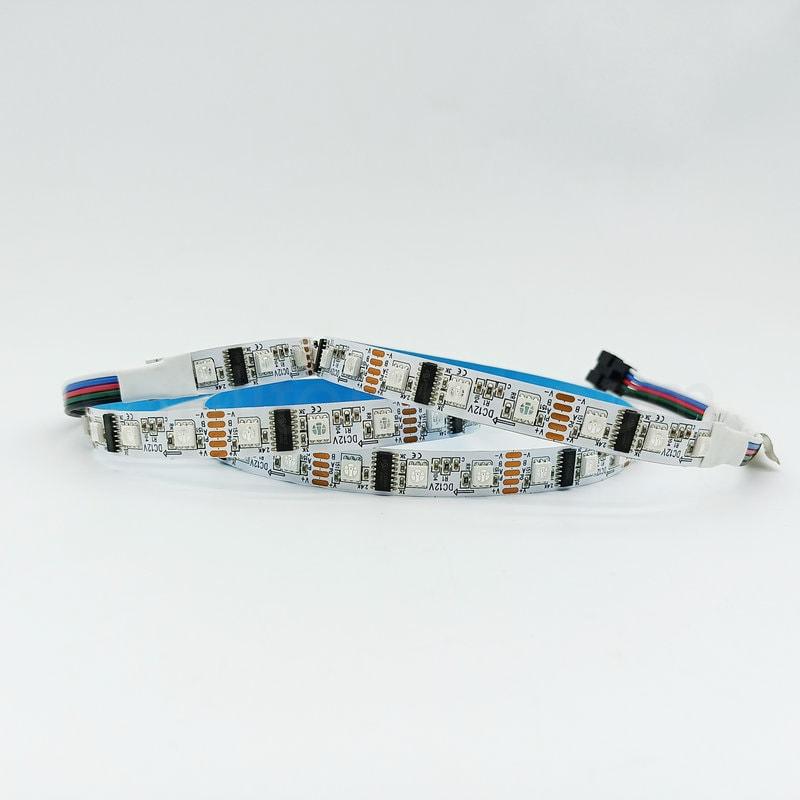
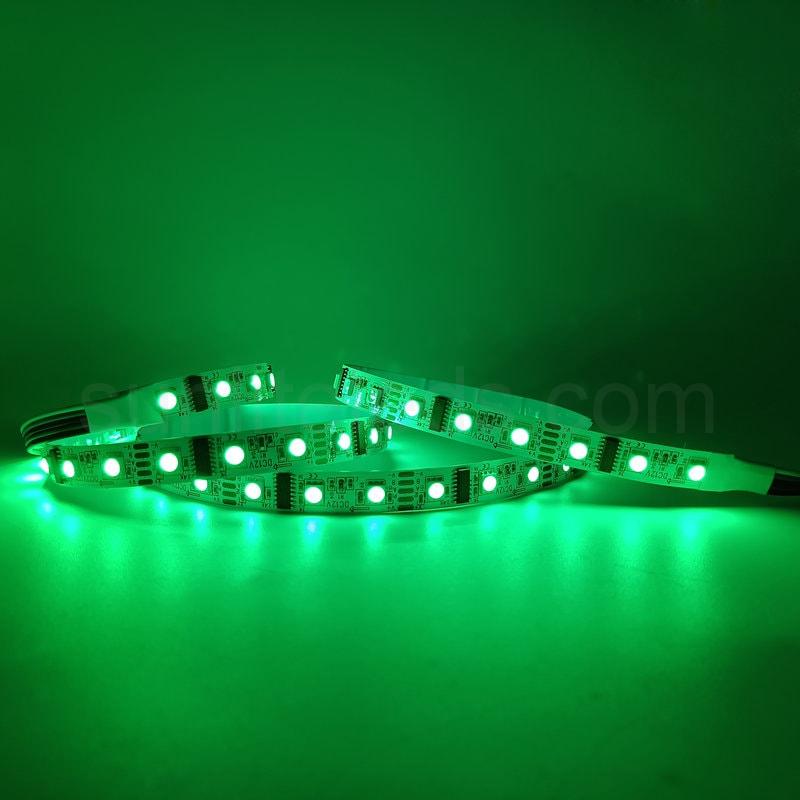
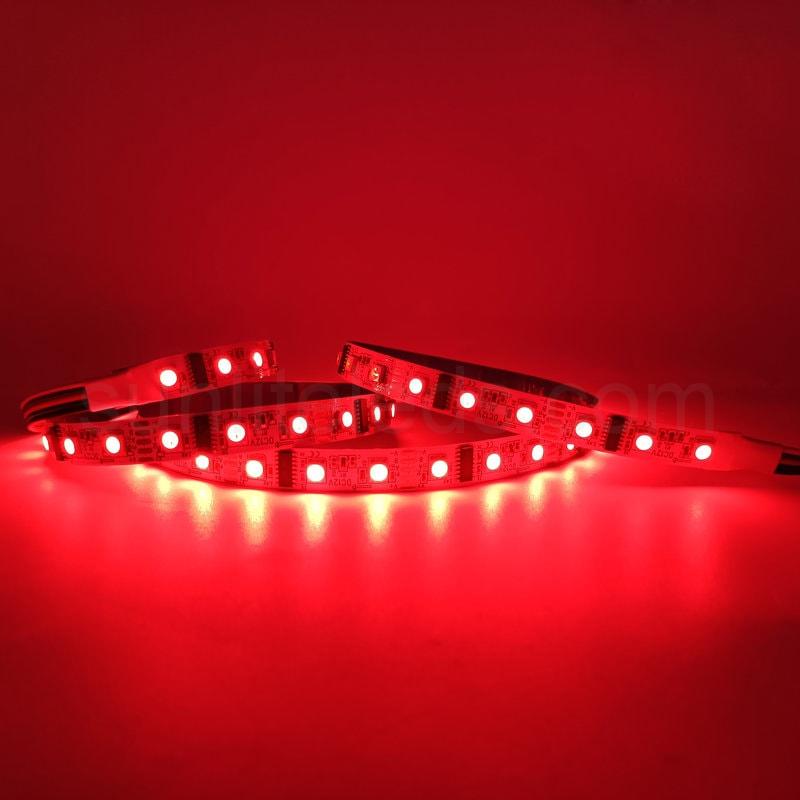
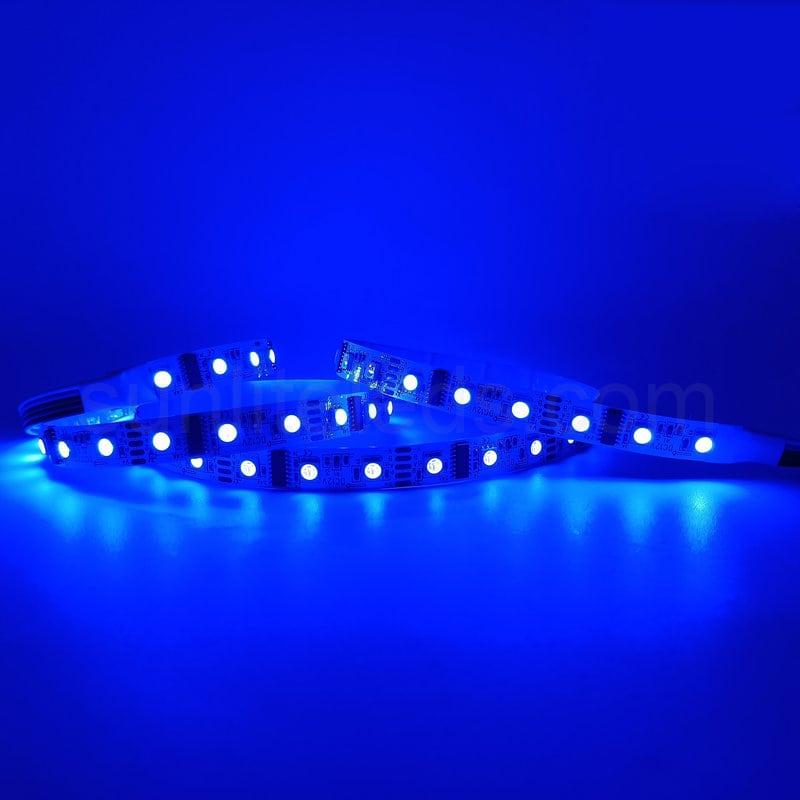
The DMX digital RGB LED strip light is very popular and warmly welcomed by lighting designers, stage lighting operator, event planners. Because DMX RGB LED strips can change colors and produce a variety of dynamic effects, including color fades, chases, and strobes. This allows for more creative and dynamic lighting designs. And DMX LED lights can be controlled using DMX controllers and Matrix software. This makes it easy to create complex lighting sequences and effects without needing advanced programming skills
SuntechLite is a leading LED lighting fixtures manufacturer and supplier in China, our professional engineering team provides technical support from the inquiry to the installation. We have served customers from USA, Netherlands, Italy, Saudi Arabia, Japan, South Korea, etc. Welcome to contact us of you have any stage lighting, entertainment lighting and light decoration projects.
DMX RGB LED Strip Dimension


How to connect the DMX RGB Pixel LED Tape Light


